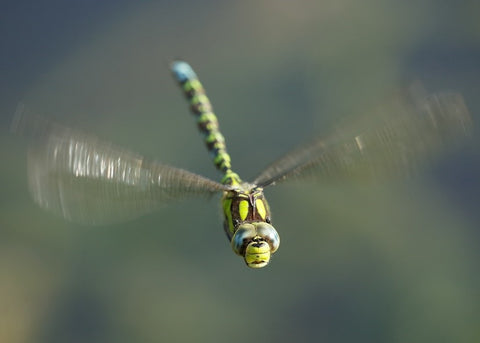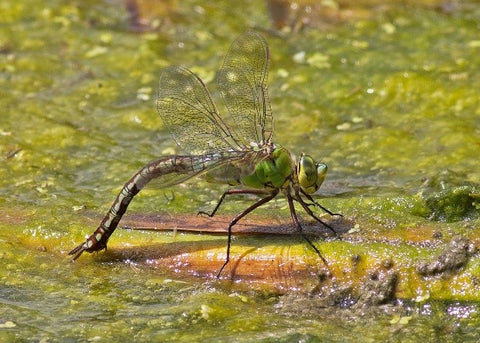Our friends at the British Dragonfly Society have answered lots of questions for us on why these magical insects are so special including the difference between Dragonflies and Damselflies. Let's take a look at some interesting insights:
- Dragonflies are so sociable - you don’t have to get up at the crack of dawn to see them. They love sunny, warm days in the summer and they live in beautiful places near water. So all you need to do is meander over to a pond, lake or river’s edge from late morning onwards on a sunny summer’s day and you’ll be in with a chance of seeing these fantastic beasts. What’s not to love?

- Dragonflies are insects described as Anisoptera meaning “unequal-winged.” In Great Britain and Ireland, there are about 30 different species.
- Baby dragonflies are called larvae. They live in water and breathe through their backsides! They are actually underwater creatures as they spend the majority of their life in this form.
- All dragonfly larvae have six legs (as do adults), wing-sheaths and an extendable hinged jaw (labium) that can shoot out in an instant and catch their prey. Prey includes insect larvae, crustaceans, worms, snails, leeches, tadpoles and small fish.
- On average, a dragonfly larvae will live underwater, eating other creatures and growing for around 2-5 years. When it's big enough and ready, it will find the stem of a plant and crawl up it, burst out of its larval skin and a much larger insect will emerge. The newly formed dragonfly has to pump up its wings, grow it’s abdomen and strengthen its legs. This process takes a good few hours and the fresh dragonfly is very vulnerable so will seek shelter after it’s maiden flight.

- In the adult form, the dragonfly will only live for around 4-6 weeks, the main focus is to find a mate and to breed and then lay eggs into the water where the whole lifecycle will begin again.

- Dragonflies are not only super cool but they have been around for a LONG time. They evolved to almost perfection 300 million years ago – that’s before dinosaurs were even around.
- Dragonfly ancestors - the Griffinflies (sound like something from Harry Potter!) were giant. It is thought that their wing span could have reached up to 70cm. That’s about the size of a large gull. As oxygen levels gradually reduced in our atmosphere over time these huge insects would have died out as their ineffective breathing system could not cope with lower levels of oxygen. The smaller ones would have survived and evolved to be the smaller sized insect that we all know and love today.





